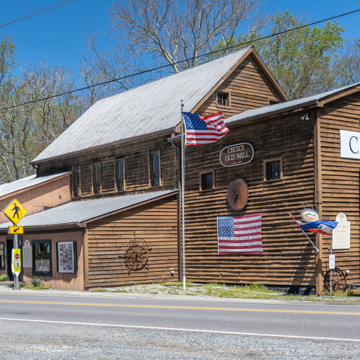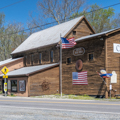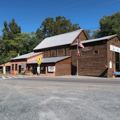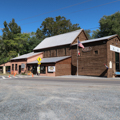This group of buildings including a mill, store, house, and modest church illustrates the presence of small-scale industry in the otherwise predominantly agricultural local economy. The mill, the last survivor of several situated near this location, sits on the site of Clifton Factory (c. 1826–1900), which struggled to produce textiles as well as milling grain and wood. John T. Cecil demolished the older mill and built a two-and-a-half-story wood structure, reusing portions of the foundation, main drive shaft, and gearing. The overshot waterwheel on the northeast side was supplemented by one of the first diesel generators in the region, in 1927. Now used as a retail space, the mill still displays original equipment for milling corn and flour, as well as exterior sawmilling equipment that remained in use until 1959. The early-twentieth-century store located across the road is a quintessential example, with a one-story shed-roofed porch along the entire front of the long frame structure. Reopened as a gift store, the interior includes the original post office fixtures.
You are here
CECIL’S OLD MILL AND CECIL’S COUNTRY STORE
If SAH Archipedia has been useful to you, please consider supporting it.
SAH Archipedia tells the story of the United States through its buildings, landscapes, and cities. This freely available resource empowers the public with authoritative knowledge that deepens their understanding and appreciation of the built environment. But the Society of Architectural Historians, which created SAH Archipedia with University of Virginia Press, needs your support to maintain the high-caliber research, writing, photography, cartography, editing, design, and programming that make SAH Archipedia a trusted online resource available to all who value the history of place, heritage tourism, and learning.






















